29 start with D start with D
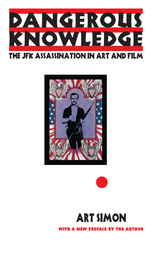
In his new Preface to this edition of Dangerous Knowledge, Art Simon discusses public fascination with celebrity deaths and recent assassination-related media-from documentaries to scholarly books to the scandalous video game JFK Reloaded-to show that the assassination continues to inspire writers, artists, and filmmakers.
Dangerous Knowledge examines the seminal works of art associated with the assassination, including Andy Warhol's silk screens, the underground films of Bruce Conner, and provocative Hollywood films like The Parallax View and JFK. Simon's investigation places assassination art and images within a historical context-one that helps us understand what the assassination has meant to American culture.


The analysis of film music is emerging as one of the fastest-growing areas of interest in film studies. Yet scholarship in this up-and-coming field has been beset by the lack of a common language and methodology between film and music theory. Drawing on the philosophy of Gilles Deleuze, film studies scholar Gregg Redner provides a much-needed analysis of the problem which then forms the basis of his exploration of the function of the film score and its relation to film's other elements. Not just a groundbreaking examination of persistent difficulties in this new area of study, Deleuze and Film Music also offers a solution—a methodological bridge—that will take film music analysis to a new level.
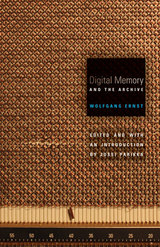
In the popular imagination, archives are remote, largely obsolete institutions: either antiquated, inevitably dusty libraries or sinister repositories of personal secrets maintained by police states. Yet the archive is now a ubiquitous feature of digital life. Rather than being deleted, e-mails and other computer files are archived. Media software and cloud storage allow for the instantaneous cataloging and preservation of data, from music, photographs, and videos to personal information gathered by social media sites.
In this digital landscape, the archival-oriented media theories of Wolfgang Ernst are particularly relevant. Digital Memory and the Archive, the first English-language collection of the German media theorist’s work, brings together essays that present Ernst’s controversial materialist approach to media theory and history. His insights are central to the emerging field of media archaeology, which uncovers the role of specific technologies and mechanisms, rather than content, in shaping contemporary culture and society.
Ernst’s interrelated ideas on the archive, machine time and microtemporality, and the new regimes of memory offer a new perspective on both current digital culture and the infrastructure of media historical knowledge. For Ernst, different forms of media systems—from library catalogs to sound recordings—have influenced the content and understanding of the archive and other institutions of memory. At the same time, digital archiving has become a contested site that is highly resistant to curation, thus complicating the creation and preservation of cultural memory and history.
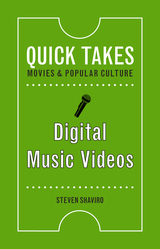
As these videos have proliferated online, they have become more widely accessible than ever before. In Digital Music Videos, Steven Shaviro examines the ways that music videos interact with and change older media like movies and gallery art; the use of technologies like compositing, motion control, morphing software, and other digital special effects in order to create a new organization of time and space; how artists use music videos to project their personas; and how less well known musicians use music videos to extend their range and attract attention.
Surveying a wide range of music videos, Shaviro highlights some of their most striking innovations while illustrating how these videos are creating a whole new digital world for the music industry.
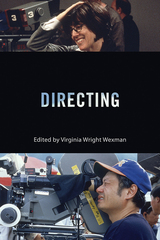
The latest volume in the Behind the Silver Screen series, this collection provides the first comprehensive overview of how directing, as both an art and profession, has evolved in tandem with changing film industry practices. Each chapter is written by an expert on a different period of Hollywood, from the silent film era to today’s digital filmmaking, providing in-depth examinations of key trends like the emergence of independent production after World War II and the rise of auteurism in the 1970s. Challenging the myth of the lone director, these studies demonstrate how directors work with a multitude of other talented creative professionals, including actors, writers, producers, editors, and cinematographers.
Directing examines a diverse range of classic and contemporary directors, including Orson Welles, Tim Burton, Cecil B. DeMille, Steven Soderbergh, Spike Lee, and Ida Lupino, offering a rich composite picture of how they have negotiated industry constraints, utilized new technologies, and harnessed the creative contributions of their many collaborators throughout a century of Hollywood filmmaking.


With a film industry divided by linguistic heritage, African directors do not have the luxury of producing comedies, thrillers, horror films, or even love stories, except perhaps as DVDs that do not travel far outside their country of production. Instead, African directors tend to cover serious sociopolitical ground, even under the cover of comedy, in the hopes of finding funds outside Africa. Contributors to this volume draw on filmic representations of the continent to consider the economic role of women, rural exodus, economic migration, refugees, and diasporas, culture, religion, and magic as well as representations of children, music, languages, and symbols.
A survey of national cinemas in one volume, DirectoryofWorldCinema: Africa is a necessary addition to the bookshelf of any cinephile and world traveler.

With its sprawling celebrity homes, the Walk of Fame, and the iconic sign on the hill, Hollywood is truly the land of stars. Glamorous and larger than life, many of the most memorable motion pictures of all time have emanated from its multimillion-dollar film industry, which exports more films per capita than that of any other nation.
Directory of World Cinema: American Hollywood lays out the cinematic history of Tinseltown—the industry, the audiences, and, of course, the stars—highlighting important thematic and cultural elements throughout. Profiles and analyses of many of the industry’s most talented and prolific directors give insights into their impact on Hollywood and beyond. A slate of blockbuster successes—and notable flops—are here discussed, providing insight into the ever-shifting aesthetic of Hollywood’s enormous global audience.
User-friendly and concise yet containing an astonishing amount of information, Directory of World Cinema: American Hollywood shows how truly indispensable the Hollywood film industry is and provides a fascinating account of its cultural and artistic significance as it marks its centennial.






A complementary edition rather than an update of its predecessor, the book offers essays on war and family films, as well as on LGBT cinema and representations of disability in British films. Contributors consider established British directors such as Ken Loach and Danny Boyle as well as newcomer Ben Wheatley, who directed the fabulously strange A Field in England. This volume also shines the spotlight on the British Film Institute and its role in funding, preservation, and education in relation to British cinema.
A must read for any fan of film, the history of the United Kingdom, or international artistic traditions, Directory of World Cinema: Britain 2 will find an appreciative audience both within and outside academia.

A survey of a vibrant—and expanding—industry, Directory of World Cinema: China 2 examines, among other themes, China’s desire for success and fulfillment in the United States, as well as the extensive history of representing China—and the Chinese in America—on US movie screens. With contributions from some of the leading academics in the field, this volume will be essential reading for all fans of Chinese film.

Artistic, intellectual, and appreciably avant-garde, the French film industry has, perhaps more than any other national cinema, been perennially at the center of international filmmaking. With its vigorous business and wide-ranging film culture, France has also been home historically to some of the most influential filmmakers and movements – and, indeed, the very first motion picture was screened in Paris in 1895.
This volume addresses the great directors and key artistic movements, but also ventures beyond these well-established films and figures, broadening the canon through an examination of many neglected but intriguing French films. Framing essays explore the salient stylistic elements, cultural contexts, and the various conceptions of cinema in France, from avant-gardes to filmmaking by women, from documentary and realism to the Tradition of Quality, as well as genres like comedy, crime film, and horror. Illustrated by screen shots, film reviews by leading international experts offer original approaches to both overlooked titles and acknowledged classics. Readers wishing to explore particular topics in greater depth will be grateful for the book’s reading recommendations and comprehensive filmography.
A visually engaging journey through one of the most dynamic, variegated, and idiosyncratic film industries, Directory of World Cinema: France is a must-have for Francophiles and cinema savants.

Iranian cinema has an extraordinary history that has been marked by religion and ever-shifting political, economic, and social environments. This addition to Intellect’s Directory of World Cinema series turns the spotlight on the award-winning cinema of that nation, with particular attention to the major movements, historical turning points, and prominent figures that have helped shape it. A wide range of genres are presented, including comedy, Film Farsi, new wave, children’s films, art house film, and women’s cinema. For the film studies scholar, students working on alternative or national cinema, or for all those who love Persian cinema and wish to learn more, Directory of World Cinema: Iran will be an essential companion to this prolific and prominent film industry.

Though the spotlight is on the filmmakers, this new volume continues to consider a wide range of genres associated with Japanese cinema, including animation, contemporary independent cinema, J-Horror, the New Wave, period drama, science fiction, and yakuza.
Like its predecessors, Directory of World Cinema: Japan 3 endeavors to move scholarly criticism of Japanese film out of the academy and into the hands of cinephiles the world over. This volume will be warmly welcomed by those with an interest in Japanese cinema that extends beyond its established names to equally remarkable filmmakers who have yet to receive such rigorous attention.


Directory of World Cinema: Scotland provides an introduction to many of Scottish cinema’s most important and influential themes and issues, films, and filmmakers, while adding to the ongoing discussion concerning how to make sense of Scotland’s cinematic traditions and contributions. Chapters on filmmakers range from Murray Grigor to Ken Loach, and Gaelic filmmaking, radical and engaged cinema, production, finance, and documentary are just a few of the topics explored. Film reviews range from popular box office hits such as Braveheart, and Trainspotting to lesser known but equally engaging independent and lower budget productions, such as Shell and Orphans. This book is both a stimulating and accessible resource for a wide range of readers interested in Scottish film.
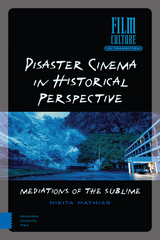
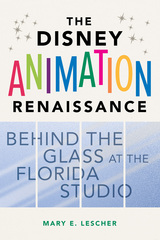
A ground-level look at the entertainment giant, The Disney Animation Renaissance profiles the people and purpose behind a little-known studio during a historic era.

Over the last two decades, the field of audiovisual media has changed dramatically. Until recently, there was only a small number of technologies, distribution channels were few, and moving images were largely limited to cinemas, televisions, galleries, or art museums. Also, both the producers and the audiences of such content clearly identified as human beings. Those days are over.
The digitization of image production and distribution ushered in a massive disruption to the traditional landscape of the moving image that had existed since the advent of the audiovisual industry. Touching on discussions such as child producers, the marketing interests of big corporations, and the origins of new media formats and practices, Display, Distribute, Disrupt maps the new conditions for creative work in the ever-widening sphere of audiovisual media.

The New Deal introduced sweeping social, political, and cultural change across the United States, which Hollywood embraced enthusiastically. Then, when the heady idealism of the 1930s was replaced by the paranoia of the postwar years, Hollywood became an easy target for the anticommunists. A Divided World examines some of the important programs of the New Deal and the subsequent response of the film community—especially in relation to social welfare, women’s rights, and international affairs. The book also provides an analysis of the major works of three European directors—Billy Wilder, Ernst Lubitsch, and Fritz Lang—compared and contrasted with the products of mainstream Hollywood. This is a new interpretation of an influential period in American film history and it is sure to generate further debate and scholarship.
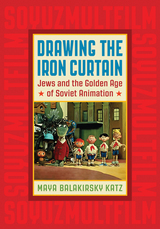

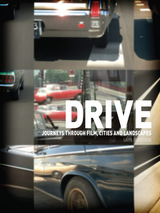
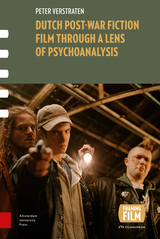
READERS
Browse our collection.
PUBLISHERS
See BiblioVault's publisher services.
STUDENT SERVICES
Files for college accessibility offices.
UChicago Accessibility Resources
home | accessibility | search | about | contact us
BiblioVault ® 2001 - 2024
The University of Chicago Press









